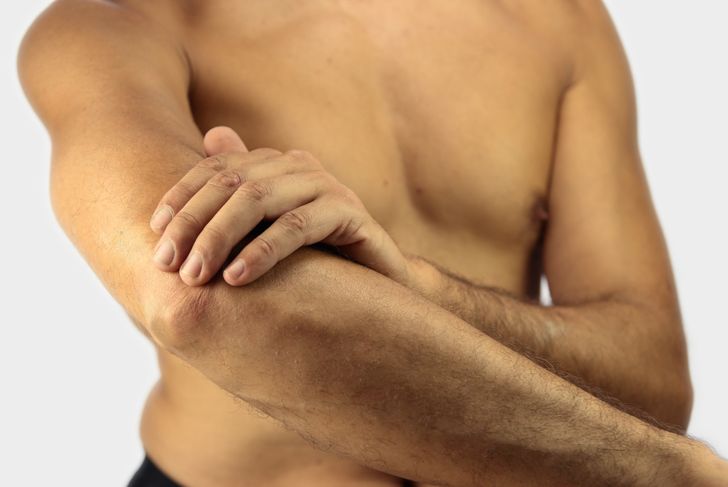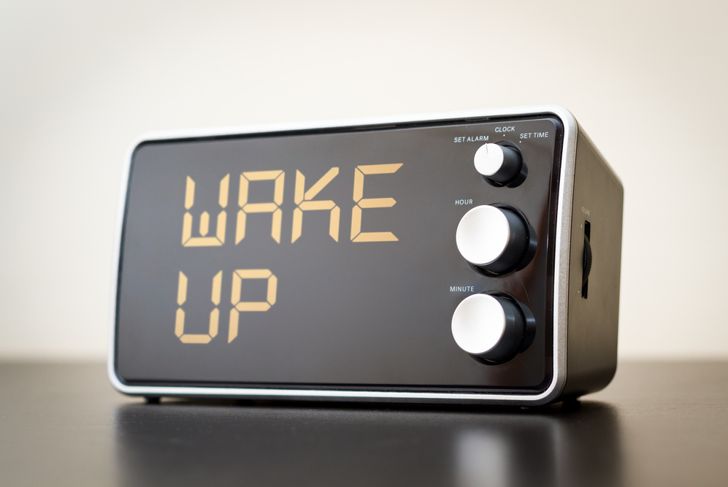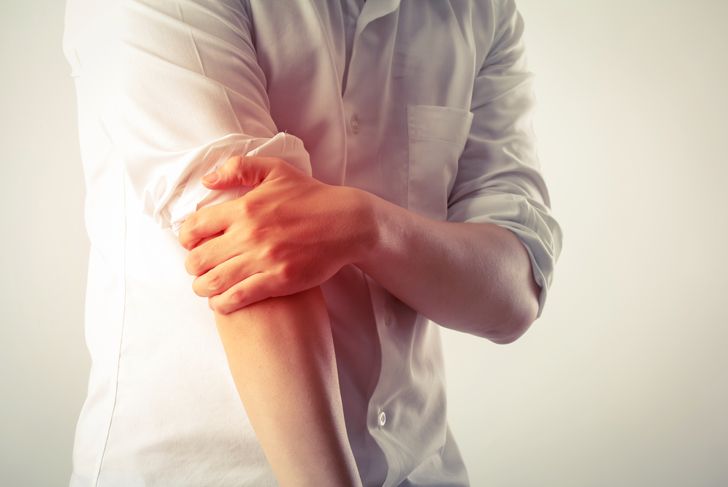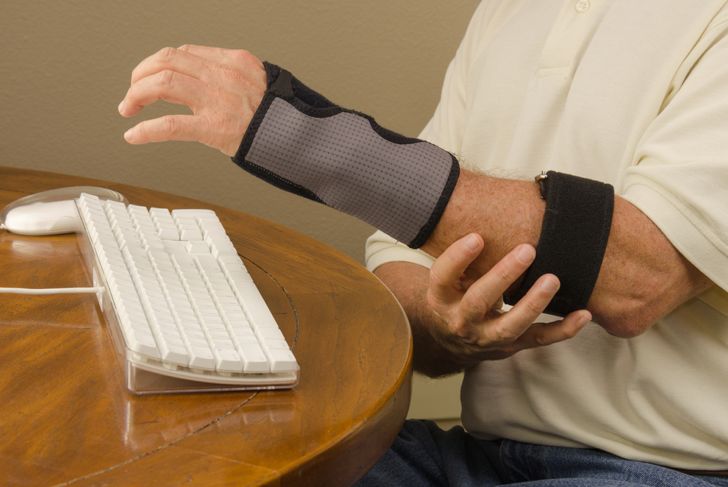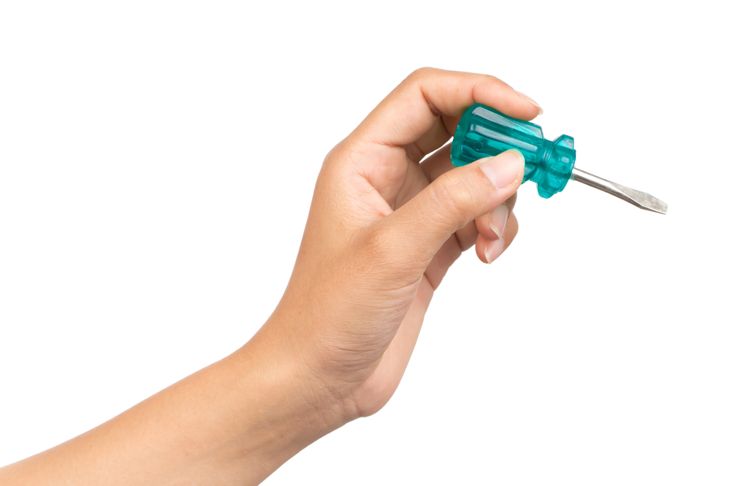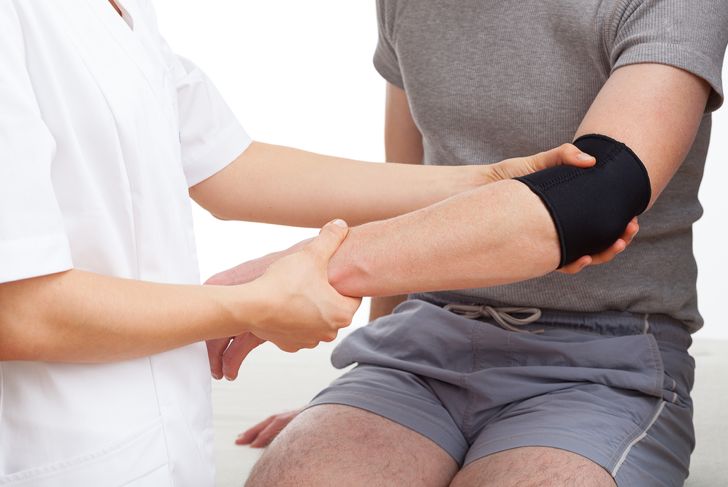Despite the name, tennis players aren’t the only people who can develop tennis elbow; they are the most likely, but one out of two people gets this injury at some point in their life. Plumbers, butchers, typists, video gamers, and anyone else who repeatedly makes specific motions with their arms and wrists can develop tennis elbow. People in their 30s and 40s are most at risk of these symptoms.
Pain in the Upper Forearm
Persistent pain in the upper forearm is one of the classic tennis elbow symptoms. This pain usually occurs on the outer arm just beneath the elbow, and many people describe this as a burning sensation. However, other injuries can cause similar symptoms, so if this pain persists past a few days, it is best to consult a doctor. In general, tennis elbow is a mild injury that often requires no medical intervention.
Pain Increases with Activities
People with tennis elbow immediately find basic movements, such as raising or bending the arms or while holding a pen, very painful. Some individuals may experience pain during rotational motions as well, such as turning the forearm to open a door.
Rest Brings Relief
In the majority of mild cases of tennis elbow, people find the pain decreases significantly when the arm is resting. Usually, this relief indicates that medical attention is not required, but when the pain continues for a long period, one loses feeling in the arm, or if rest is no longer painless, it is time to see a doctor.
Pain Often Varies According to the Time of Day
Tennis elbow can cause the injured arm to feel stiff and achy upon waking in the morning. As the day proceeds, these sensations should decrease, though discomfort and possibly pain are likely to continue to some degree. Depending on how active the arm was during the day, individuals may feel better or experience more pain before bed.
The Nature of the Pain Changes
Tennis elbow pain often starts off like a burning ache on the outer forearm and elbow, later becoming more intense. Without sufficient rest, the pain can radiate all the way the forearm to the wrist or ascend into the upper section of the arm towards the shoulder. The activity level of each injured person and other factors mean these sensations vary from person to person.
Painful Handshakes
The handshake is one of our most common and accepted social interactions, but for a person with tennis elbow, it is likely one of the first actions he or she will seek to avoid. The squeezing and motion required for a handshake is usually excruciating and is similar to the grip and movements of a tennis racquet.
Increased Sensitivity to Pressure
Any pressure on the affected area will increase the pain for a person with tennis elbow. This is because the tendon that attaches on the outside of the joint has become inflamed.
Pain Starts Suddenly
Unlike acute injuries, where pain or discomfort begins immediately after the damage occurs, tennis elbow cannot always be clearly identified with an injury. Often, it is the stress of repeated movement that causes eventual inflammation and pain. The slow development of the sensations can also make the cause difficult to pinpoint; often, people do not notice significant symptoms immediatelyWhile the pain starts suddenly after a movement of the forearm, the underlying problem (tiny tears created in the tendons of the elbow) developed gradually, over time, from repeated movements of the forearm.
It Becomes Harder to Grip Everyday Objects
The tendency of tennis elbow to cause weakened grip strength is one of the most significant ways the injury interferes with an individual’s day to day life. At its most severe, tennis elbow can render any action that requires some strength of the hand extremely difficult and painful.
Pain Goes Away Without Treatment
Although tennis elbow pain is excruciating and can interfere with work and other activities, it is almost always considered a mild injury. Most people find their pain decreases and eventually disappears without medical intervention, as long as they practice sufficient rest and home remedies such as applying cold and heat. If the pain worsens significantly or does not improve over time, see a doctor.

 Home
Home Health
Health Diet & Nutrition
Diet & Nutrition Living Well
Living Well More
More